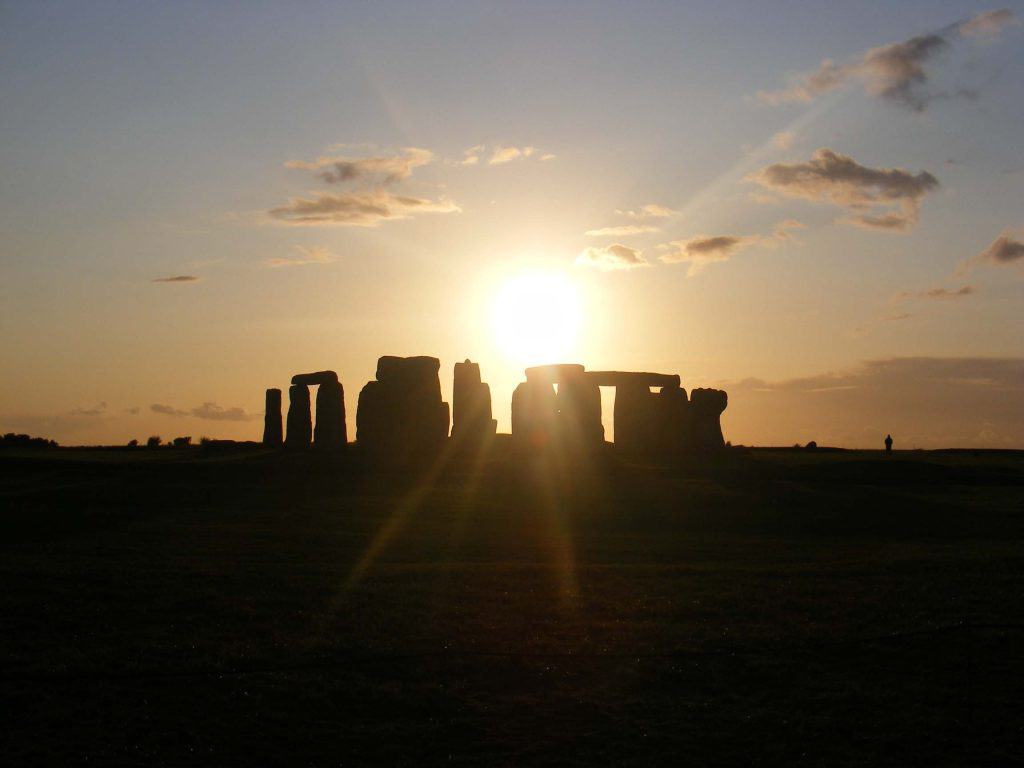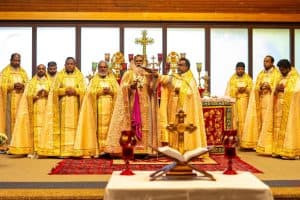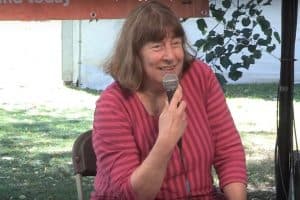By Tim Wyatt
In 2019, a fresh insight was gained into an ancient site that has fascinated every generation for centuries. Geologists have managed to pinpoint the exact quarry where the largest stones used to construct Stonehenge were mined: a patch of woodland about 20 miles from Salisbury Plain.
This is the latest in a series of archaeological discoveries in recent decades that have shed light on numerous aspects of the Neolithic monument. But are we any closer to understanding what religious significance, if any, Stonehenge had for those who built it more than 5,000 years ago?
THE IMPORTANCE OF THE STONES
Archaeologists have identified the exact spot where the larger sarsen stones in the centre of Stonehenge’s circle come from, the West Woods near the Wiltshire village of Lockeridge.
The sarsens occur across the south of England but were of immense interest to the prehistoric people who built Stonehenge because they are anomalous and lie scattered about individually, not connected to any bedrock (caused by a retreating glacier millions of years earlier). In many cultures around the world such anomalous boulders acquired spiritual significance and often were associated with the spirits of the dead.
Close study of the West Woods area suggests some of the sarsens had been built into a huge tomb structure more than 1,000 years before they were dragged to Stonehenge.
The other stones used to construct Stonehenge are even more intriguing. Known as bluestones, they were taken from the Preseli Hills in Wales, 150 miles away. This remarkable feat, one of the factors that make Stonehenge unique, has often prompted the greatest speculation about the religious significance of the monument. Many have argued only some kind of supernatural belief could have motivated the builders to go to such efforts.
A MONUMENT TO ANCESTORS
Countless theories as to what exactly Stonehenge was have been made over the years: an astronomical observatory, a pagan temple to the sun, and even a landing site for alien spacecraft. But recent findings have debunked most of the more fanciful speculation.
What is now broadly accepted is that Stonehenge was deliberately built to align with the sunset and sunrise of the summer and winter solstices, mirroring a naturally occurring avenue in the landscape that lines up with the movement of the sun.
Mike Parker Pearson, an archaeologist at University College London, has spent decades excavating around Stonehenge and is the primary proponent of the theory that the site revolves around veneration and commemoration of ancestors.
Working with the Malagasy archaeologist Ramilisonina, Parker Pearson has suggested the use of stone boulders to build Stonehenge points to the desire for permanence, mirroring the eternal existence of dead ancestors.
Parker Pearson and Ramilisonina also helped to uncover the existence of a circle of wooden posts, two miles from Stonehenge at Durrington, which they theorise was the “domain of the living”, built of wood that gradually decays and expires like humans.
“The really fantastic thing is normally hypotheses in archaeology don’t last beyond the first half an hour of putting the first spade into the ground and this has really endured. The more we find, the more we are seeing how those initial ideas from 1998 are actually holding water,” Parker Pearson said.
Hundreds of burials are known to have taken place at Stonehenge, and at Durrington Walls archaeologists have found evidence of human settlement rather than a cemetery.
Other burial mounds and barrows dating from the era also have connections with the sun and solstices, supporting the theory that Stonehenge was associated with the dead. Intriguingly, Parker Pearson has studied animal bones found in middens and rubbish pits from Durrington Walls that suggests they were killed and eaten during the winter. This proves, he arguest, that the people who built and used Stonehenge gathered for feasting and rituals around the midwinter solstice, rather than the more popular midsummer solstice attached to Stonehenge festivities today.
He is relatively dismissive of suggestions Stonehenge was a temple to worship the sun, instead noting the proliferation of Neolithic activity in the vicinity: eight sites, all reflecting the alignment with the solstice that is naturally present in the shape of the land.
“They have built the monument where you actually have it constructed into the land, so that the land and the heavens are kind of in harmony,” he said. “A kind of spirit of the place, rather than some all-encompassing sun worship or pantheism. The one principle that does seem to unite them all is this concern with ancestors.”
The moving of the bluestones from Wales is the next focus of archaeological study. Some stone circles have been uncovered in Wales and Parker Pearson believes the moving of stones 150 miles to Salisbury Plain in the east represents a unifying or re-establishing of ancestral identity.
“The key thing that has really come out of our work is the idea that Stonehenge is just a religious monument couldn’t be farther from the truth. It’s all tied up with politics, of ancestry, of unity.”
A PLACE OF HEALING
But not all of those studying the World Heritage Site agree with the focus on ancestors. One competing theory is that Stonehenge functioned as a site of healing, which has been proposed by, among others, Tim Darvill, an archaeologist from Bournemouth.
Darvill suggests the initial sarsen stage of Stonehenge represented a kind of sacred house, as the shape of the first stone rings mirrored that of smaller-scale dwellings from the same era. Then, when the Welsh bluestones were installed it acquired healing associations, because the boulders were probably taken from an earlier monument.
“It became a healing centre where the perceived curative powers of the bluestones introduced into the site from west Wales brought new powers to an already ancient place,” Darvill writes in a recent paper summarising his conclusions. There is evidence that axe heads and arrow tips were chipped away from the bluestones over the centuries, bolstering the suggestion that the stones were seen as special in some way.
Darvill has also argued that the central, larger sarsens may have represented either specific deities or even elemental forces or realms, connected to the sun and moon as they rose and fell aligned with the axis of Stonehenge.
AN ENDURING MYSTERY
It is likely all the major theories have elements of truth. Archaeologists know the site was repeatedly reconfigured, adapted and changed over thousands of years of use by quite different people groups. “Stonehenge was a long-lived and complex structure and it would be naïve to imagine that it had one unchanging purpose throughout its history,” Darvill has written.
He agrees that at times it was a kind of cemetery associated with the celebration of the dead, along the lines of Parker Pearson’s theory, but suggests Stonehenge later became a monument to the living, and then a “place of pilgrimage for those who travelled in the hope that their ailments would be cured”.
In this way it could even resemble more modern religious buildings such as cathedrals, which rather than having a single symbolic purpose contain a multitude of elements and spaces designed for various forms of religious practice.
Professor Ronald Hutton, a historian who has studied pre-Christian religion in Britain, said the entire effort to discover why Stonehenge was built was in some ways a red herring. The great paradox of our relationship with the monuments was that decades of enormous archaeological progress has uncovered more and more about the technology, health, ethnicity of those who built it, but almost nothing about their social lives. Despite a revolution in understanding prehistory, “we still can’t get into their minds so we know just as little about their religious beliefs, ceremonies, their social arrangements, their gender relations, their political structures, as we did a hundred years ago,” he said.
Both Parker Pearson and Darvill’s theories were plausible, Hutton said, but there would probably be many more in the future. The basic divide was between those who thought Stonehenge was the locus of a “wise and good religion, of the veneration of nature and of ancestors, the building of community” and those who instinctually saw the stones representing a “savage and barbaric religion, involving tacky things like human sacrifice”.
At different times going back to the 18th century each side of the argument had been dominant, Hutton explained. In fact, there was evidence of Roman detritus on the site suggesting a brisk tourist trade to the stones had developed almost 2,000 years ago: contemporary fascination with Stonehenge is a continuation of a long tradition itself.
MODERN DRUIDRY
What is unambiguous is that the modern neo-pagan/Druidic movement that has grown up around the stones is not a continuation of whatever religious practice happened at Stonehenge when it was first being built.
The Celtic Druids, for whom we have limited historical information, arrived on the scene about 200BC, as much as 3,000 years after Stonehenge was first built.
Jennifer Uzzell, a PhD student at Durham University who studies pagan religious experiences at ancient sacred sites such as Stonehenge, explained in our Factsheet that it was not until the 18th century that anyone first connected the Neolithic stones to Druidry.
William Stukeley (1687-1765), an Anglican cleric, physician and antiquarian, first popularised the idea that an ancient order of proto-Christian Druids had built Stonehenge. Although this was entirely untrue, it became “incredibly popular in the second half of the 18th century”, Uzzell said. “People started to build druidic follies on their own estates and this built into the idea of these wise philosopher ancestors, which people liked.” This was then adopted by a series of Christian masonic orders which used the stones sporadically for some rituals, although not as an alternative religion.
The growth of an explicitly pagan movement came later, about the start of the 20th century and growing in popularity after the Second World War, at which point the Christian orders had mostly lost interest in the stones. By this stage archaeologists had comprehensively established Stonehenge was much older than ancient Druidry and Uzzell said most modern Druids acknowledged this.
Despite this, the stones remained important to the growing neo-pagan community, and all the main orders continued to hold annual ceremonies around the solstice at Stonehenge. In the 1980s, as English Heritage took over management of the stones, relations broke down after a series of rowdy free music festivals on the site and violent clashes with police. This culminated in 15 years of total exclusion from the site until 2000 when English Heritage agreed to permit Druids and curious tourists access right up to the stones for one day a year at the solstice.
“The quiet space for a simple ritual going on doesn’t exist any more, but there is access,” Uzzell said. Druidry as it existed today was undoubtedly a modern creation, but it did not function like organised religions, she added. It was closer in style to a form of animism and different groups of druids will believe wildly different things.
“Druidry is not so much a set of beliefs as it is a way of orienting themselves to the world,” she said. This included a deep interest in connecting with both the sacred land around Stonehenge and people throughout history who built and worshipped in some form around the stones.
Contrary to popular belief, this does not involve worship of the sun necessarily, but something close to veneration, respect and witness, she said. “For some of the individuals the sun could be regarded as a god, but for others it isn’t, it’s a power of nature. But what is important is to be in that place, at that time, on that day.”
Many modern druids have worked closely with historians such as Hutton and others to better understand both the history of ancient druids, and the latest archaeological findings around Stonehenge. Rather than trying to rediscover an “Iron Age religion”, pagan movements instead draw inspiration from their ancient forebears and try to recreate their social role as ritualists, astronomists and healers, rather than their particular spiritual beliefs.

















